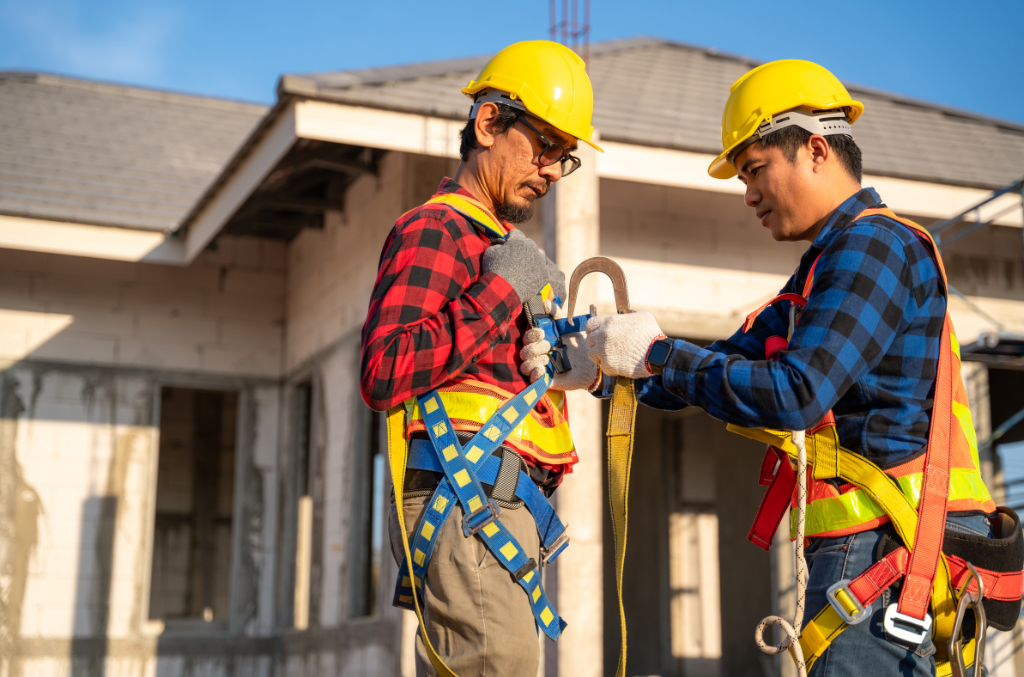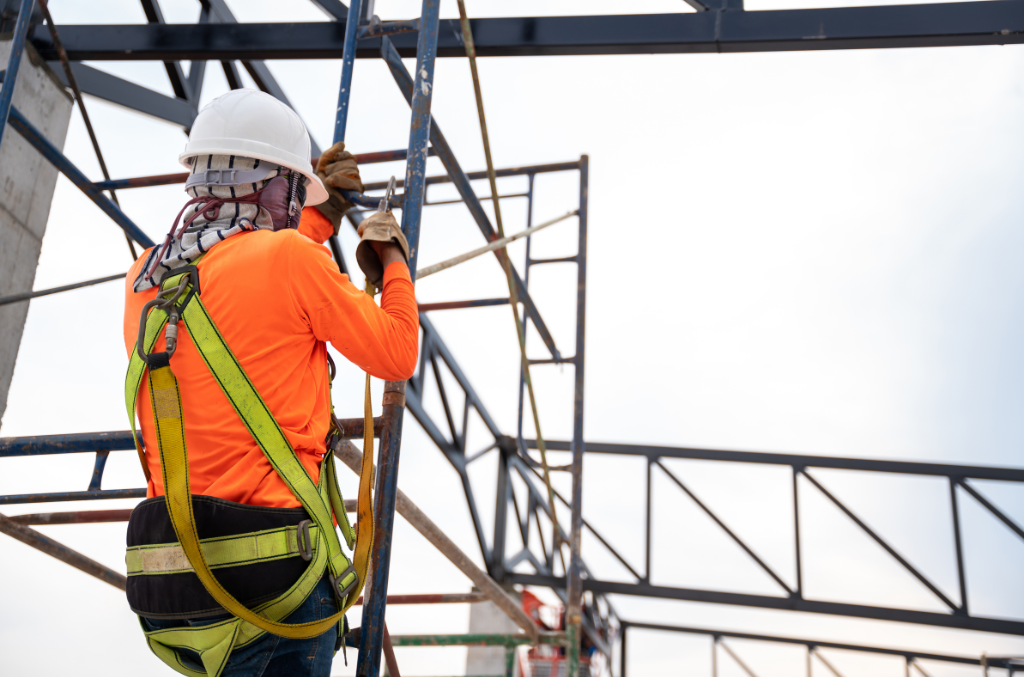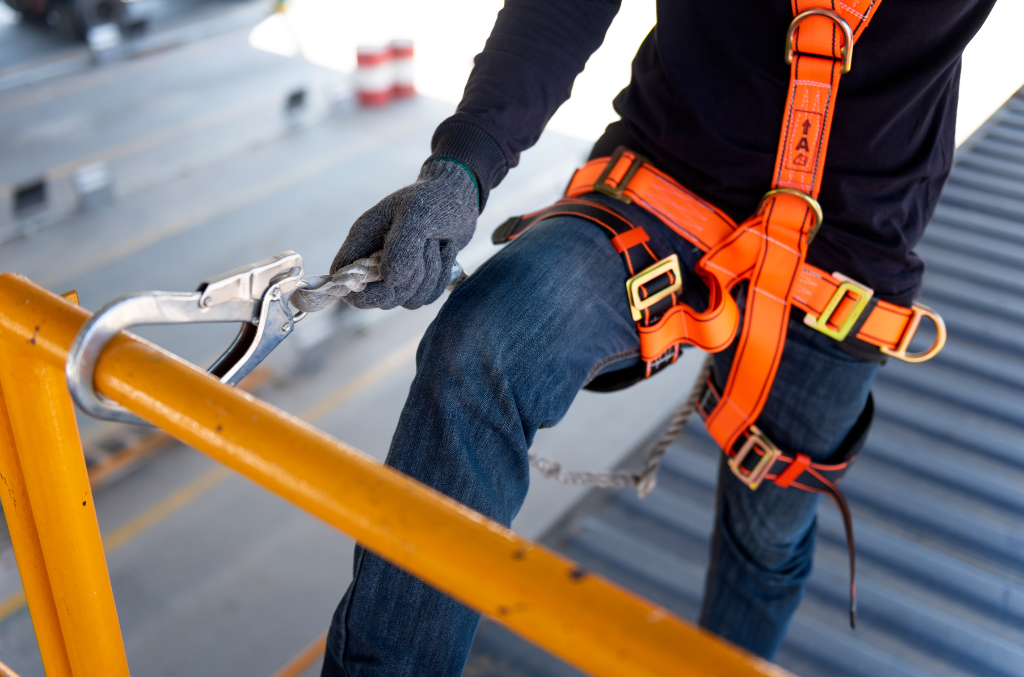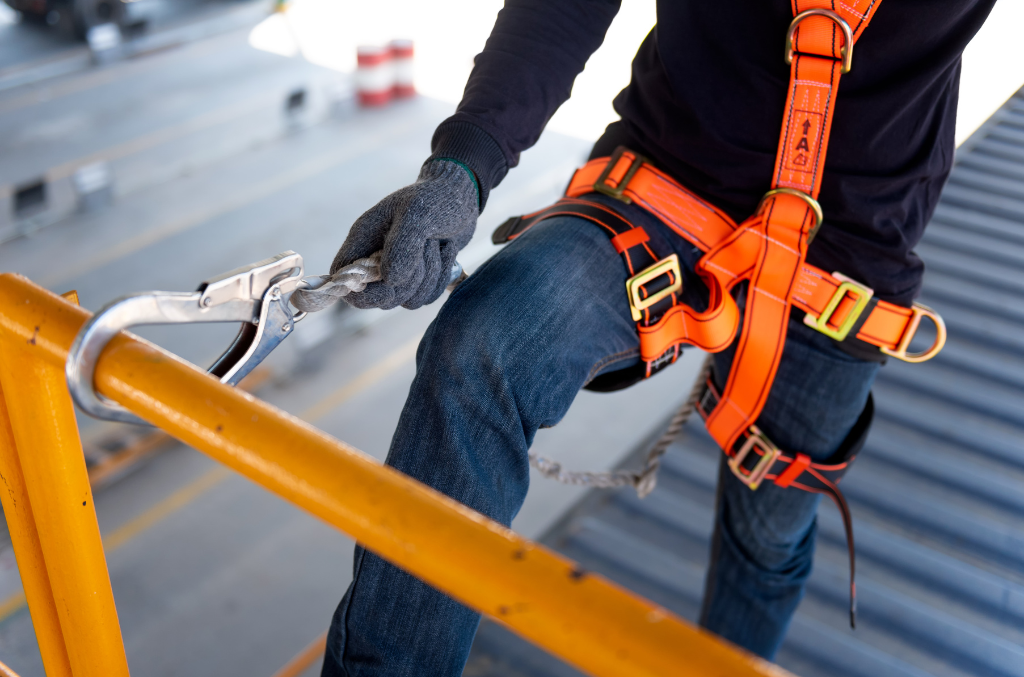Fall Protection Harnesses
Comprehensive Guide to Fall Protection Harnesses: Safety, Selection and Maintenance
Safety is a critical aspect in any working environment, and it becomes even more essential in industries where employees are exposed to height-related risks. One of the most effective safety measures against such hazards is using fall protection harnesses.
The Importance of Fall Protection Harnesses
Fall protection harnesses are designed to protect workers from fall hazards, reducing the risk of injuries and fatalities. These devices are typically used in various industries, including manufacturing, healthcare, education, and building services, where workers often perform tasks at elevated heights.
A fall protection harness is an integral part of a fall arrest system, including a lanyard, anchor point, and a deceleration device. The harness distributes the force of the fall across the wearer’s body, minimizing the chance of injury.
The importance of these harnesses cannot be overstated. According to the Occupational Safety and Health Administration (OSHA), falls are among the most common causes of serious work-related injuries and deaths. Therefore, having the right fall protection harness can make a significant difference in ensuring worker safety.
In This Article
Common Misconceptions About Fall Protection Harnesses
Despite their importance, several misconceptions surround the use of fall protection harnesses. Some people believe these devices are uncomfortable and restrict movement, affecting productivity. However, modern harnesses are designed with the user’s comfort and freedom of movement in mind.
Another common misconception is that using a harness is time-consuming and complicated. Workers can quickly and easily put on and adjust their harnesses with proper training and regular use.
Finally, some believe fall protection harnesses are only necessary for extremely high heights. This is not true. OSHA requires fall protection for any work done over 6 feet in the construction industry and over 4 feet in the general industry.
In the following sections, we will delve deeper into the types of fall protection harnesses, how they work, and how to choose and maintain them properly. We will also look at the regulatory aspects and the different brands available in the market.
Understanding Different Types of Fall Protection Harnesses

Fall protection harnesses come in various types, each designed for specific applications and working conditions. Here are the three main types:
Full Body Harnesses
A full-body harness is the most common type of fall protection harness. It consists of straps that pass over the shoulders, across the chest, and around the legs. In the event of a fall, a full-body harness distributes the force of the fall across the body, minimizing the risk of injury.
This type of harness is typically used in the construction industry, manufacturing plants, and any other environment where workers must work at significant heights.
Chest Harnesses
Chest harnesses are designed to secure the user’s torso to prevent falls. They are typically used in combination with other fall protection equipment, such as a full-body harness or safety lanyard.
While they provide less comprehensive protection than full-body harnesses, chest harnesses are suitable for certain applications, such as climbing or when the worker is positioned in a suspended workstation.
Suspension Belts
Suspension belts are a type of harness that supports workers who are required to be suspended for extended periods. These belts provide comfort and stability, allowing workers to focus on their tasks without worrying about maintaining their balance.
It’s crucial to note that suspension belts are not designed to be used as fall arrest devices. They are meant to be used in conjunction with a full-body harness or other fall protection system.
Understanding the different types of fall protection harnesses is the first step in ensuring worker safety. In the next sections, we’ll explore the science behind these harnesses, their industry applications, and tips for choosing the right harness for your needs.
The Science Behind Fall Protection Harnesses
Understanding the science behind fall protection harnesses is crucial for appreciating their importance and making informed decisions when choosing and using these devices.
The Physics of Falling
When a person falls, gravity pulls them towards the ground, and the speed of their descent increases the longer they fall, due to acceleration. The impact force upon hitting the ground can lead to severe injuries or even death.
A fall protection harness works to counteract this force by slowing down the fall and evenly distributing the stopping force across the body. This reduces the risk of injury and increases the chances of survival in the event of a fall.
How Fall Protection Harnesses Work
A fall protection harness is part of a broader fall arrest system, which includes a lanyard, an anchor point, and a deceleration device. When a fall occurs, the deceleration device activates to slow down the fall while the lanyard and anchor point secure the person.
Simultaneously, the harness distributes the force of the fall across the body rather than concentrating it in one area. This force distribution reduces the risk of injury and makes the fall more survivable.
Key Features of Effective Harnesses
An effective fall protection harness should have several key features. It should be comfortable to wear and allow freedom of movement not to impede the worker’s tasks.
The straps should be adjustable to ensure a snug fit for different body sizes. D-rings and attachment points should be positioned correctly to maintain the worker’s balance if they fall.
Additionally, the harness should be made of durable materials to withstand harsh working conditions and resist wear and tear.
In the next sections, we will discuss the different applications of fall protection harnesses across various industries, how to choose the right harness for your needs, and how to maintain your harness for optimal safety and longevity.
Industry Applications of Fall Protection Harnesses

Fall protection harnesses are integral safety devices across a range of industries. Here’s an overview of how these harnesses are used in various sectors.
Manufacturing and Distribution
Workers in the manufacturing and distribution sector often need to access high shelves or platforms, making fall protection harnesses a vital safety measure. These harnesses are used alongside other fall prevention measures, such as guardrails and safety nets to ensure worker safety.
Healthcare
In the healthcare industry, fall protection harnesses are commonly used during maintenance tasks. For example, workers might need to reach high places when repairing hospital equipment or during building maintenance. In such scenarios, harnesses provide the necessary safety measures to protect workers from fall hazards.
Education
In educational facilities, fall protection harnesses are used during maintenance and repair tasks. This could include anything from fixing a leaky roof to changing light bulbs in a high-ceiling auditorium. The harnesses ensure that maintenance staff can safely perform their duties without the risk of falling.
Building Services
Building services encompass a variety of tasks, many of which involve working at height. This includes window cleaning, facade maintenance, and repair work. In these cases, fall protection harnesses are essential to ensure the safety of workers.
Across all these industries, using fall protection harnesses is not just a safety best practice but often a legal requirement. In the next sections, we will provide tips for choosing the right fall protection harnesses, discuss their proper usage and maintenance, and delve into the regulatory aspects governing their use.
Tips for Choosing the Right Fall Protection Harnesses

Selecting the right fall protection harness is crucial in ensuring worker safety. Here are some considerations to keep in mind.
Assessing Your Specific Needs
The first step in choosing a fall protection harness is assessing your needs. Consider the nature of the work, the work environment, and the potential fall hazards. For instance, if your workers are usually suspended, you might need suspension belts and full-body harnesses.
Understanding Harness Ratings
Harnesses come with different load ratings, which indicate the maximum weight they can safely support. When choosing a harness, ensure it has a suitable rating for the user’s weight, including any tools or equipment they might carry.
Material Considerations
The material of the harness is another important consideration. It should be durable enough to withstand the conditions of your work environment. For instance, if your workers are exposed to harsh weather or chemicals, you might need harnesses made from weather-resistant or chemical-resistant materials.
Comfort and Fit
A good harness should be comfortable and fit well. It should be adjustable to accommodate different body sizes and shapes. Remember, an uncomfortable harness that doesn’t fit properly can discourage workers from using it, undermining your safety efforts.
In the next sections, we will discuss the proper usage and maintenance of fall protection harnesses, the regulatory aspects surrounding their use, and the different brands available in the market.
Proper Usage and Maintenance of Fall Protection Harnesses
Proper usage and maintenance of fall protection harnesses are vital for ensuring their effectiveness and longevity. Here are some key points to consider.
Correct Donning of Harnesses
Understanding how to put on a harness correctly is crucial. The harness should fit snugly, with all straps adjusted to the wearer’s body size. The D-rings should be positioned correctly to maintain the worker’s balance in case of a fall. All workers should be trained to ensure they know how to don the harness correctly.
Regular Inspection and Maintenance
Regular inspection of fall protection harnesses is a must. Check for any signs of wear and tear, such as frayed straps, buckle cracks, or rust metal parts. Any harness that shows signs of damage should be taken out of service immediately.
In addition to visual inspections, periodic professional inspections should be conducted based on the manufacturer’s recommendations. These inspections can help identify any hidden defects that might compromise the harness’s safety.
Harness Lifespan and Replacement
Even with proper maintenance, fall protection harnesses have a limited lifespan. Factors such as frequency of use, exposure to harsh conditions, and even storage conditions can affect a harness’s lifespan.
The manufacturer usually provides a recommended replacement schedule. However, any harness involved in a fall should be replaced immediately, even if it doesn’t show any visible signs of damage.
In the following sections, we will delve into the regulatory aspects of fall protection harnesses, review different brands, and conclude with some final thoughts on the importance of these essential safety devices.
Regulatory Aspects of Fall Protection Harnesses
Understanding the regulatory aspects surrounding using fall protection harnesses is crucial for compliance and ensuring worker safety. Here are the key points to consider.
OSHA Regulations for Fall Protection
The Occupational Safety and Health Administration (OSHA) has set forth workplace fall protection regulations. According to OSHA standards, employers must provide fall protection for employees working at heights of 6 feet or more in the construction industry and 4 feet or more in the general industry.
The regulations also specify the types of fall protection systems that can be used, and fall protection harnesses are one of the accepted systems. Employers are also required to provide training to employees on the use and maintenance of these systems.
ANSI Standards for Harnesses
The American National Standards Institute (ANSI) also provides standards for fall protection harnesses. These standards specify these devices’ design, performance, and testing criteria.
For instance, ANSI standard Z359.11-2014 provides guidelines for full-body harnesses, specifying the harness’s design requirements, performance, marking, qualification, instruction, training, inspection, use, maintenance, and removal from service.
The Role of Industry Certification
Industry certification plays a critical role in ensuring the quality and safety of fall protection harnesses. Certifications from organizations like ANSI and CSA (Canadian Standards Association) indicate that the harness meets the necessary safety standards. Always look for these certifications when choosing a fall protection harness.
In the next section, we will review different brands of fall protection harnesses, comparing their price and quality to help you make an informed choice.
Different Brands of Fall Protection Harnesses
When it comes to fall protection harnesses, several reputable brands have proven their reliability and commitment to safety. Here’s a review of some leading brands in the market.
Review of Leading Brands
3M Fall Protection: Known for its innovative safety solutions, 3M offers a range of fall protection harnesses designed for comfort, freedom of movement, and safety. Their harnesses are known for their durability and adherence to safety standards.
Honeywell Miller: Honeywell Miller is another prominent name in the field of fall protection. They offer a wide variety of harnesses suitable for different industries. Their products are praised for their comfort, ease of use, and high safety ratings.
MSA Safety: MSA Safety’s fall protection harnesses are designed with the user’s comfort and safety in mind. They offer a range of harnesses, including specialty harnesses for confined spaces and rescue operations.
Guardian Fall Protection: Guardian Fall Protection offers comprehensive fall safety solutions. Their harnesses are known for their superior quality, durability, and adherence to safety regulations.
Comparing Price and Quality
When comparing different brands, it’s crucial to consider both the price and the quality of their products. While choosing the cheapest option might be tempting, remember that safety should never be compromised. Look for a brand that offers a good balance of affordability and quality.
In the final section, we will conclude with some final thoughts on the importance of fall protection harnesses, making an informed harness choice, and the role of regular maintenance and inspection.
Fall Protection-Save Life
The Necessity of Fall Protection Harnesses
Fall protection harnesses are more than just a safety requirement – they’re a lifesaving tool in many industries. Whether it’s manufacturing, healthcare, education, or building services, these devices play a crucial role in protecting workers from height-related hazards.
Making an Informed Harness Choice
Choosing the right fall protection harness involves considering various factors, including the type of work, the work environment, the harness’s material, and comfort and fit. Understanding these factors, alongside regulatory requirements and standards, can help you make an informed choice that ensures worker safety.
The Role of Regular Maintenance and Inspection
Lastly, the effectiveness of a fall protection harness isn’t just about choosing the right one. Regular maintenance and inspection ensure the harness’s longevity and performance. Remember, a harness that isn’t properly maintained can compromise its ability to protect the wearer from fall hazards.
Understanding and implementing these aspects can create a safer working environment that minimizes the risk of fall-related injuries and fatalities. Safety should always be a priority, and fall protection harnesses are an excellent tool in achieving that goal.
Frequently Asked Questions (FAQ)
IP Products offers a wide range of Fall Protection Harnesses to meet your needs. Browse our collection today and find the perfect Fall Protection Harnesses for your job. We are dedicated to quality, customer satisfaction, and fast shipping.

